Shifts in naturalistic behaviors induced by early social isolation stress are associated with adult binge-like eating in female rats
- PMID: 39726771
- PMCID: PMC11669510
- DOI: 10.3389/fnbeh.2024.1519558
Shifts in naturalistic behaviors induced by early social isolation stress are associated with adult binge-like eating in female rats
Abstract
Binge eating (BE) is a highly pervasive maladaptive coping strategy in response to severe early life stress such as emotional and social neglect. BE is described as repeated episodes of uncontrolled eating and is tightly linked with comorbid mental health concerns. Despite social stressors occurring at a young age, the onset of BE typically does not occur until adulthood providing an interval for potential therapeutic intervention. Currently, our knowledge of longitudinal noninvasive digital biomarkers predictive of BE needs further development. Monitoring longitudinal impacts of adolescent social isolation stress on naturalistic behaviors in rats will enable the identification of noninvasive digital markers of disease progression to predict adult eating strategies. Recognizing adolescent naturalistic behaviors shaped by social stress informs our understanding of the underlying neurocircuits most effected. This study aimed to monitor and identify longitudinal behavioral shifts to enhance predictive capabilities in a rat model of social isolation stress-induced BE. We placed Paired (n = 12) and Socially Isolated (SI, n = 12) female rats in observational home cages weekly for seven weeks to evaluate the effect of SI on 10 naturalistic behaviors. All 10 naturalistic behaviors were simultaneously detected and tracked using Noldus Ethovision XT automated recognition software. Composite phenotypic z-scores were calculated by standardizing all 10 behaviors. When transitioning into adulthood, all rats underwent conventional emotionality testing and were exposed to a Western-like high fat diet (WD, 43% kcal from fat) to evaluate BE. Longitudinal assessments revealed SI-induced shifts in adolescent phenotypic z-scores and that sniffing, unsupported rearing, jumping, and twitching were the most susceptible to SI. SI increased emotionality compared to the Paired controls. Finally, we identified adolescent twitching as a digital biomarker of adult WD consumption. Our findings suggest that home cage monitoring can detect disrupted naturalistic behaviors associated with maladaptive coping.
Keywords: binge eating; early life adversity; female rodents; longitudinal; naturalistic behavior; observational cages; phenotyping; social isolation stress.
Copyright © 2024 Simon, Sierra, Williams, Wright, Rhee, Horn, Lou, Sharafeddin, Ontiveros-Ángel and Figueroa.
Conflict of interest statement
The authors declare that the research was conducted in the absence of any commercial or financial relationships that could be construed as a potential conflict of interest.
Figures


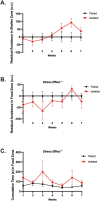
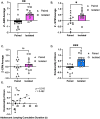
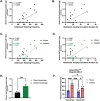
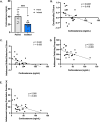
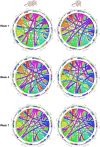
Similar articles
-
Impact of adolescent high-fat diet and psychosocial stress on neuroendocrine stress responses and binge eating behavior in adult male Lewis rats.Horm Behav. 2025 May;171:105744. doi: 10.1016/j.yhbeh.2025.105744. Epub 2025 Apr 18. Horm Behav. 2025. PMID: 40252619
-
Impact of adolescent high-fat diet and psychosocial stress on neuroendocrine stress responses and binge eating behavior in adult male Lewis rats.bioRxiv [Preprint]. 2024 Nov 14:2024.11.12.623254. doi: 10.1101/2024.11.12.623254. bioRxiv. 2024. Update in: Horm Behav. 2025 May;171:105744. doi: 10.1016/j.yhbeh.2025.105744. PMID: 39605482 Free PMC article. Updated. Preprint.
-
Effects of early social isolation and adolescent single prolonged stress on anxiety-like behaviors and voluntary ethanol consumption in female Long Evans rats.Alcohol Clin Exp Res (Hoboken). 2024 Aug;48(8):1586-1599. doi: 10.1111/acer.15397. Epub 2024 Jun 20. Alcohol Clin Exp Res (Hoboken). 2024. PMID: 39031683 Free PMC article.
-
Testing the cumulative stress and mismatch hypotheses of psychopathology in a rat model of early-life adversity.Physiol Behav. 2012 Jul 16;106(5):707-21. doi: 10.1016/j.physbeh.2012.01.015. Epub 2012 Jan 28. Physiol Behav. 2012. PMID: 22306534
-
Quantitation of naturalistic behaviors.Toxicol Lett. 1988 Oct;43(1-3):345-59. doi: 10.1016/0378-4274(88)90037-9. Toxicol Lett. 1988. PMID: 3051525 Review.
References
-
- American Psychiatric Association (2013). Diagnostic and statistical manual of mental disorders: DSM-5, 5th Edn. Washington, DC: American Psychiatric Association.
LinkOut - more resources
Full Text Sources

